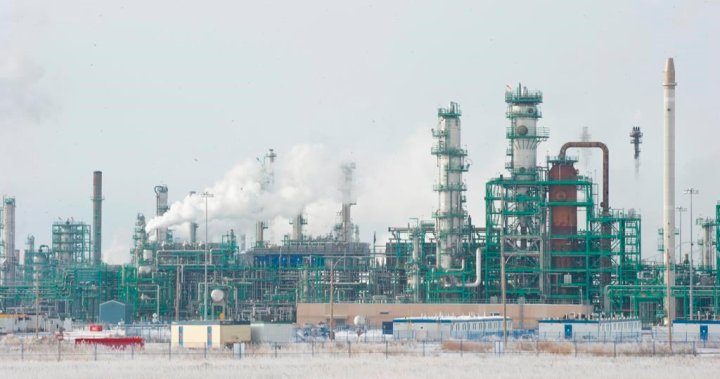The carbon price on consumer fuel like gasoline is drawing much of the attention ahead of the annual April 1 increase, to the point the opposition Conservatives called an ultimately unsuccessful non-confidence vote on the matter.
But a new study from the Canadian Climate Institute (CCI) suggests it contributes about eight to 14 per cent of Canada’s emission reductions, while the industrial policies, called large-emitter trading systems (LETS), can be credited with 20 to 48 per cent of the emission cuts.
“We’re in a strange position in Canada where most of the political debate has been focused on this aspect of carbon pricing, the consumer carbon price, the fuel charge,” Canadian Climate Institute president Rick Smith told The West Block host Mercedes Stephenson.
“We think the industrial carbon price deserves more focus in the public debate.”
The federal minimum carbon price is set to increase from $65 per tonne to $80 on April 1. For a litre of gasoline, this increases the fuel charge from $0.14 to almost $0.18.
The federal fuel charge is in place in Alberta, Saskatchewan, Manitoba, Ontario, New Brunswick, Nova Scotia, Newfoundland and Labrador, Prince Edward Island, the Yukon and Nunavut.
Breaking news from Canada and around the world
sent to your email, as it happens.
Breaking news from Canada and around the world
sent to your email, as it happens.
However, the industrial carbon price only applies in Manitoba, the Yukon and Nunavut as the other jurisdictions have their own LETS system that incorporates the federal backstop.
British Columbia, Quebec and the Northwest Territories have their own commercial and industrial fuel charges that meet the federal backstop.
Much of the debate, propelled by Conservative Leader Pierre Poilievre hosting rallies to “axe the tax” and “spike the hike,” is centred around the fuel charge.
In the CCI report, they found that LETS is the biggest driver in Canadian emission reduction, followed by the oil and gas emission cap, methane regulations, fuel charge, and waste methane capture to round out the top five.
“In fact, if you extrapolate out to 2030, the policies that we already have in place will reduce emissions about 40 per cent [of 2005 levels] below what they would be if we didn’t have this series of policy,” Smith said.
“So, there’s no question that the carbon policies that are in place are working. The consumer carbon tax is part of that architecture, but some of these policies are doing more heavy lifting than others. And certainly, the industrial carbon price is top of that list.”
When asked about the industrial carbon price on Marcjh 15 in St. Johns, N.B., Poilievre said that there are exemptions for the largest emitters in several provincial plans.
“I’m not going to slap a new carbon tax on anybody. I’m going to axe the tax to bring home lower energy prices and incentivize our industry to become even greener and even cleaner,” Poilievre said at that press conference.
While the Conservatives have not unveiled a full climate platform plank, Smith says that to keep on emissions targets any policy that is changed or removed will leave a hole that needs to be filled.
He adds that Canada has a economic incentive to maintain industrial emissions regulations.
“Over the next few years, as other countries are tuning up their industrial carbon prices, having a good price on industrial emissions is going to be the price of admission for the global economy,” Smith said.
“We’re going to need to be deemed equivalent by European and U.K. and U.S. trading partners in terms of our industrial policy. So, there’s a competitiveness arguments here in terms of getting this policy right.”
© 2024 Global News, a division of Corus Entertainment Inc.


